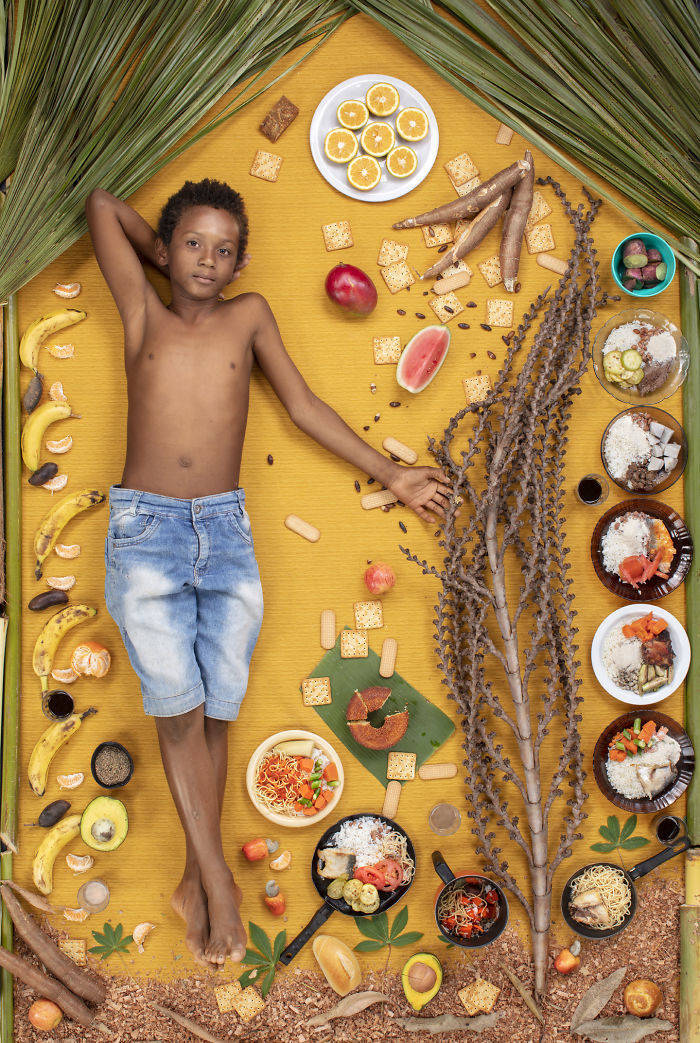Ademilson Francisco Dos Santos (11) Vão De Almas, Goiás, Brazil

Ademilson Francisco dos Santos (11) Vão de Almas, Goiás, Brazil, photographed August 19, 2018 in Brasilia. Ademilson is from Vão de Almas, a community of 300 families in the Cerrado region of Goiás. Ademilson’s home is 200 kilometers from the nearest town, a journey on mountainous, unpaved roads through valleys and across rivers - an almost impossible trip during the rainy season. There is no TV, electricity or running water. Villagers bathe, wash their clothes and clean their pots and pans in the Capivara River. Ademilson, the youngest of 7 children, goes to school in the morning (an hours walk from home) and in the afternoon, returns to help his father with farming and collecting native plants. The family cultivates a cornucopia of crops: rice, manihot (cassava), sweet potatoes, squash, beans, gherkin, okra, jiló, orange, lemon, watermelon, corn, coffee and sugar cane. They collect a bounty of native fruits, too: buriti, mangaba, mango, jatobá, pequi, caju, and coco indaiá. They produce coconut oil, mamona oil (castor oil) and sesame and peanut paçoca. They farm without the use of machinery, irrigation or pesticides and fertilize with ash from the burning of the bush. Manihot, the brown root in the upper right hand corner of the photograph, is a staple of Ademilson’s diet. His favorite treats are mangoes and paçoca (similar to peanut brittle). There are many kinds of food Ademilson doesn’t eat because they’re not part of his diet and are completely foreign. He tried a hot dog when he went to the city and hated it. He’d never eaten pizza before coming to Braslila to be photographed. In his portrait, Ademilson is holding buriti, a wild palm from the Cerrado rich in carotenoids and antioxidants which indigenous people refer to as the “tree of life” because of its many uses: its wood goes into the construction of homes and handcrafts; leaves are used to cover houses; fibers are used to make textiles and the orange pulp of the fruit is used for food. Even the seeds of the buriti fruit aren’t wasted; they’re cold pressed by natives who use the oil to protect themselves from the sun and soothe sore muscles.




You are an ugly little pathetic man.